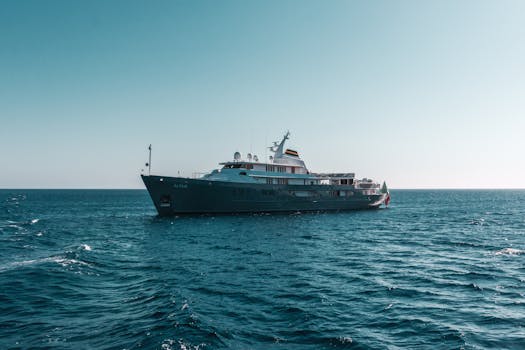
**
The seas are calling, but the call to greener boating remains unanswered by many. While the demand for sustainable solutions is booming across various sectors, the transition to emission-friendly watercraft, encompassing both recreational vessels and commercial freighters, is facing significant hurdles. From high initial costs and limited infrastructure to range anxiety and a lack of public awareness, the industry struggles to convince both recreational sailors and freight companies to embrace greener alternatives. This article delves into the challenges and explores potential solutions for a cleaner, more sustainable maritime future.
The High Cost of Going Green: A Major Hurdle for Adoption
One of the primary barriers to widespread adoption of emission-friendly watercraft is the significantly higher initial cost compared to traditional gasoline or diesel-powered vessels. Electric boats, hybrid boats, and vessels utilizing alternative fuels like hydrogen or biofuels require advanced technologies and specialized components, driving up the manufacturing and purchase price. This price discrepancy makes them less accessible to both individual boat owners and large shipping companies, where budget constraints often dictate purchasing decisions.
Breaking Down the Cost Barriers:
- Battery technology: The cost of high-capacity, long-lasting batteries for electric boats remains a significant factor.
- Fuel cell technology: Hydrogen fuel cell technology, while promising, is still in its relatively early stages of development and is expensive.
- Infrastructure limitations: The lack of widespread charging stations for electric boats and refueling stations for alternative fuels further adds to the overall cost and inconvenience.
Range Anxiety and Infrastructure Deficiencies: Challenges for Electric and Alternative Fuel Boats
Range anxiety—the fear of running out of power—is a major concern for electric boat owners. Current battery technology limits the operational range of many electric vessels, especially those used for longer journeys or commercial shipping. This is further compounded by the limited availability of charging infrastructure in many coastal areas and waterways. Similar issues plague alternative fuel vessels, where a lack of refueling stations significantly impacts their practicality and usability.
Overcoming Range Anxiety and Infrastructure Gaps:
- Investment in charging and refueling infrastructure: Governments and private companies need to invest heavily in developing a robust network of charging stations and alternative fuel depots along popular waterways.
- Battery technology advancements: Continued research and development in battery technology are crucial to increase the range and longevity of electric boat batteries.
- Hybrid solutions: Hybrid propulsion systems can offer a compromise by combining traditional engines with electric motors, extending the range while reducing emissions.
The Slow Pace of Technological Innovation and Regulation: A Necessary Catalyst
The maritime industry, known for its conservative approach to technology adoption, is slow to embrace innovation. Developing and implementing new technologies takes time, resources, and a significant shift in mindset. Furthermore, regulatory frameworks often lag behind technological advancements, creating uncertainty and hindering the development and deployment of emission-friendly watercraft. Lack of standardized regulations across different regions adds another layer of complexity.
Accelerating Technological Advancement and Regulation:
- Government subsidies and incentives: Financial incentives can encourage manufacturers to invest in greener technologies and incentivize consumers to purchase emission-friendly vessels.
- Streamlined regulatory processes: Clearer and more standardized regulations are needed to facilitate the development and adoption of new technologies.
- Collaboration and knowledge sharing: Fostering collaboration between manufacturers, researchers, and regulatory bodies is essential for accelerating innovation.
Public Awareness and Education: A Crucial Missing Piece
Many people are simply unaware of the environmental impact of boating and the availability of greener alternatives. Raising public awareness about the benefits of emission-friendly watercraft is crucial to driving demand and encouraging their adoption. Educating consumers about the various options available, their benefits, and the associated costs can empower them to make informed decisions.
Increasing Public Awareness and Education:
- Public awareness campaigns: Targeted campaigns highlighting the environmental benefits of green boating can help change perceptions.
- Educational programs: Educational initiatives targeting boaters and the broader public can promote understanding of sustainable boating practices.
- Industry collaboration: The boating industry should work together to promote emission-friendly alternatives and highlight their benefits.
The Future of Green Boating: A Path Towards Sustainability
The transition to emission-friendly watercraft is undeniably crucial for protecting our oceans and mitigating climate change. While the challenges are significant, the potential benefits—cleaner waters, reduced greenhouse gas emissions, and a more sustainable maritime industry—are too great to ignore. Through concerted efforts from governments, industry players, researchers, and consumers, a cleaner, greener future for boating is achievable. This requires a multifaceted approach that addresses the cost barriers, infrastructure deficiencies, technological limitations, and lack of public awareness. Only then can we truly chart a course towards a sustainable and environmentally responsible maritime future for both recreational and commercial vessels, ushering in an era of truly green boating.




















